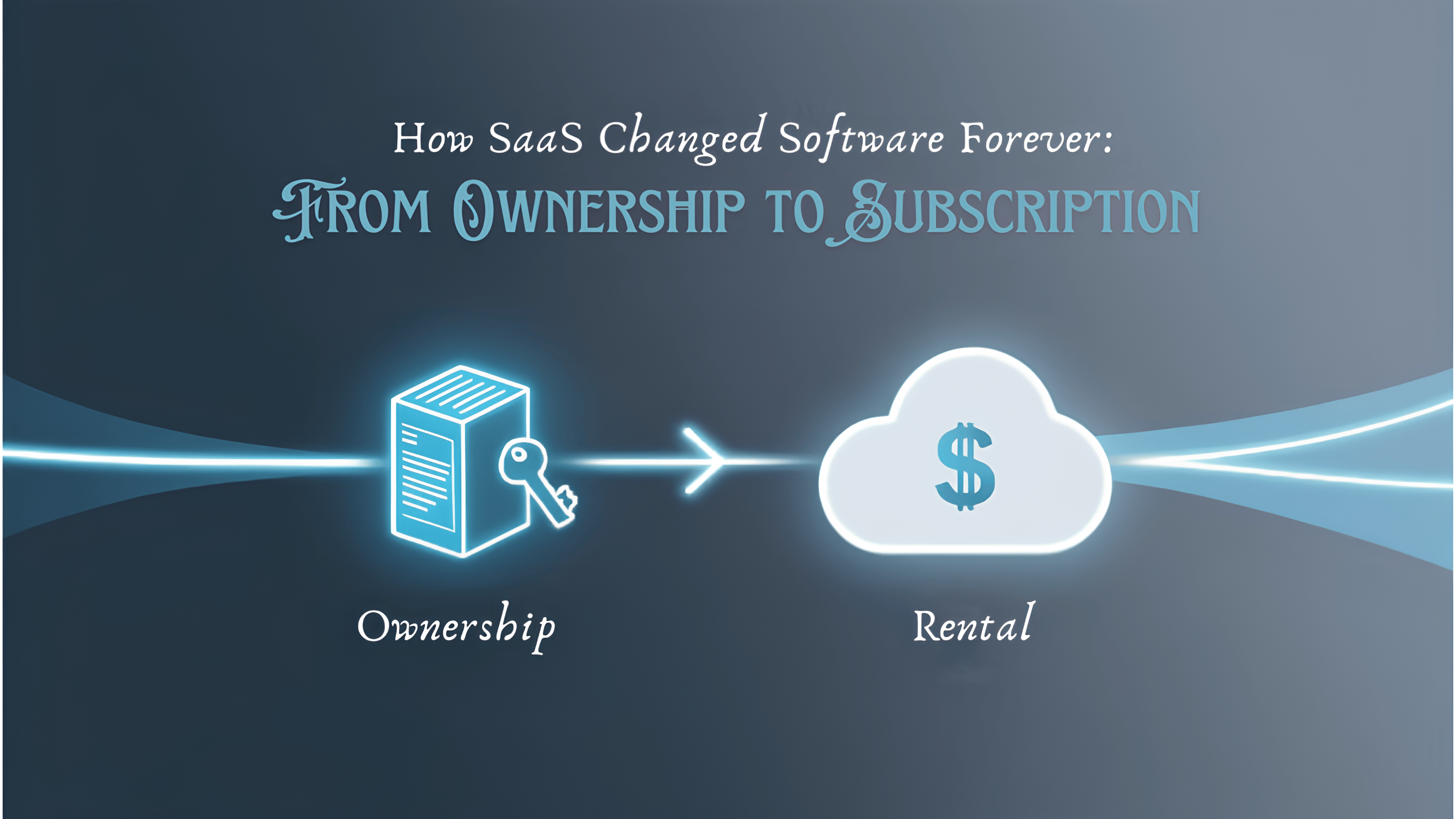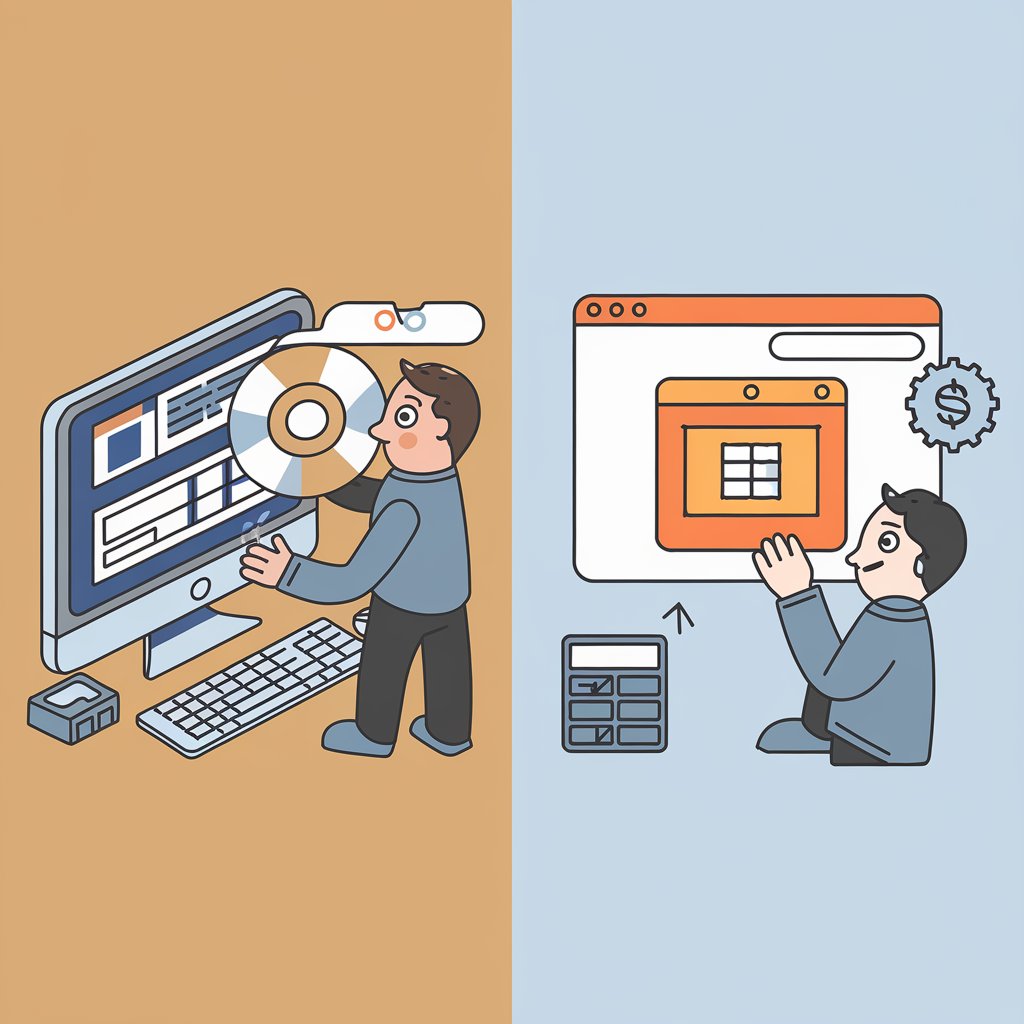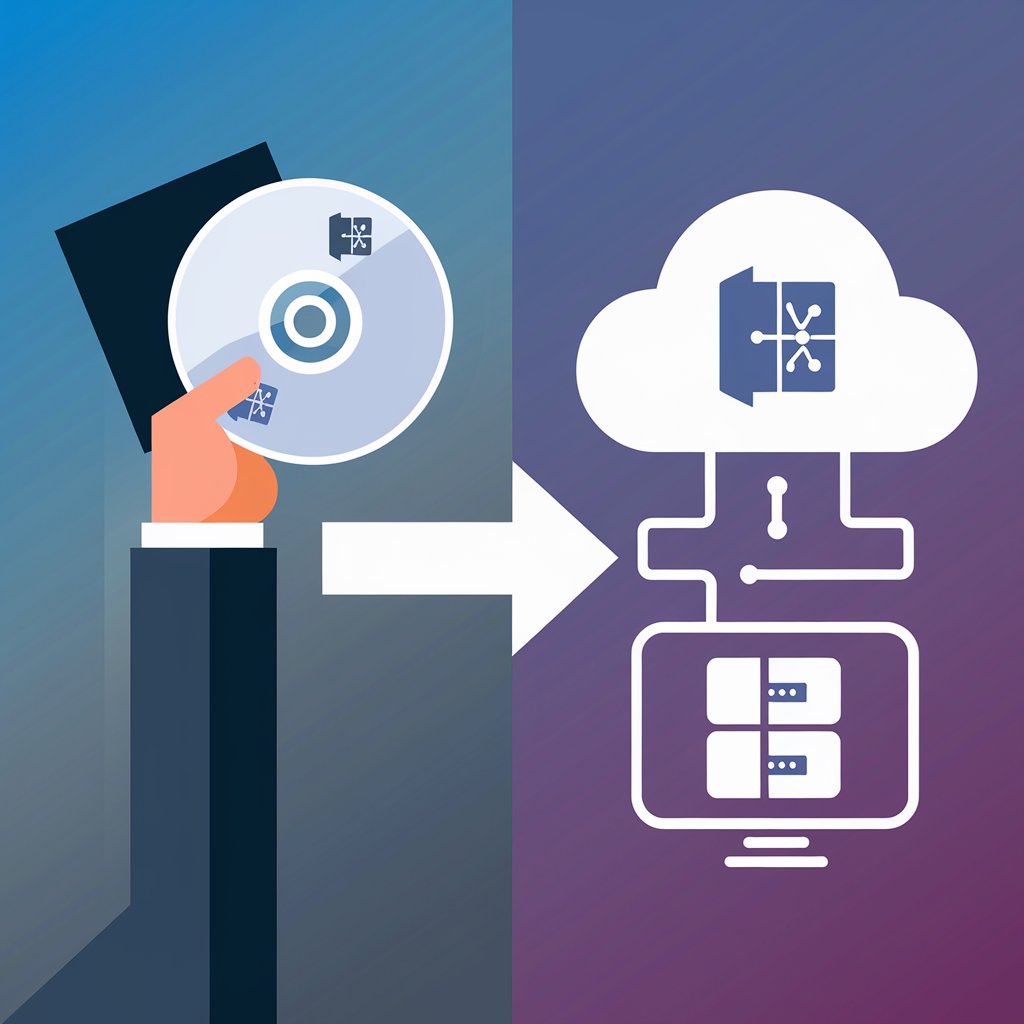The Impact of SaaS: Moving Software from Ownership to Subscription
 Saqib Quadri
Saqib QuadriTable of contents
- The Cost Breakdown: Subscriptions vs. Ownership
- TL; DR
- The article examines the debate between SaaS (Software as a Service) and traditional software ownership, comparing costs, scalability, vendor lock-in, accessibility, customization, data security, and environmental impact. It highlights the advantages of SaaS, such as flexibility and automatic updates, against the control and potential long-term savings offered by traditional software. Real-world examples and expert opinions illustrate the pros and cons of each model, ultimately suggesting that the best choice depends on individual business needs and priorities.
- Scalability: Growing Without the Headache
- Vendor Lock-in: The Perpetual Expense Trap
- Accessibility and Updates: Convenience vs. Choice
- Customization: Fit vs. Function
- Data and Security: Who’s in Charge?
- The Mindset Shift: Renting vs. Owning
- Real-World Examples: Bringing the Debate to Life
- The Environmental Angle: Green or Not?
- Legal and Compliance: Who’s Got Your Back?
- Future Trends: What’s Next?
- Expert Voices: Adding Credibility
- The Pushback: A Return to Ownership
- So, Which Saves More?

Imagine you’re a small business owner like John, staring at two options on your desk. Option one: buy accounting software outright for a one-time fee of $500. Option two: subscribe to a sleek SaaS solution for $20 monthly. At first, the subscription looks like a steal—until John does the math. Over five years, he’d pay $1,200 for SaaS, more than double the traditional cost. But then he wonders: what about updates, scalability, and the hassle of maintenance? Suddenly, the choice isn’t so clear. Welcome to the heated debate of SaaS versus traditional software ownership—where costs tell only half the story.
The SaaS revolution has flipped the software world upside down, offering easy access through subscriptions instead of hefty upfront purchases. Traditionalists push back, arguing that owning software outright saves money in the long run. In this post, we’ll dig into real numbers, examples, and expert insights to unpack this cost debate, helping you figure out which side wins for you.
The Cost Breakdown: Subscriptions vs. Ownership
Let’s start with something familiar: Microsoft Office. Buy Office Home & Student 2019 for $150, and you’ve got Word, Excel, and PowerPoint forever—or at least until it’s outdated. Or, subscribe to Office 365 Personal for $70 a year, which throws in 1TB of cloud storage and constant updates. Here’s how it shakes out over five years:
Traditional: $150 (one-time).
SaaS: $350 ($70 x 5).
Looks like a win for ownership, right? Not so fast. With the traditional version, a major upgrade might hit every three years—say another $150—pushing your five-year total to $300. Still cheaper than SaaS, but the gap shrinks. Plus, that cloud storage and always-fresh software might tip the scales for some.
Now, picture a small business with 10 employees needing a CRM system:
Traditional CRM: $5,000 upfront + $1,000/year maintenance = $10,000 over five years.
SaaS CRM (e.g., Salesforce): $25/user/month x 10 users = $3,000/year, or $15,000 over five years.
Here, traditional software edges out on price. But SaaS includes automatic updates and vendor-managed security, potentially cutting IT costs elsewhere. A study by IDC suggests SaaS can save businesses up to 30% on IT expenses—though that depends on your setup and how long you stick around.
TL; DR
The article examines the debate between SaaS (Software as a Service) and traditional software ownership, comparing costs, scalability, vendor lock-in, accessibility, customization, data security, and environmental impact. It highlights the advantages of SaaS, such as flexibility and automatic updates, against the control and potential long-term savings offered by traditional software. Real-world examples and expert opinions illustrate the pros and cons of each model, ultimately suggesting that the best choice depends on individual business needs and priorities.

Scalability: Growing Without the Headache
SaaS shines when your needs change fast. Say that small business doubles to 20 employees:
Traditional: Another $10,000 for licenses, plus possible hardware upgrades.
SaaS: Add users for $25/month each—$6,000/year total, no hardware fuss.
Scalability is why Gartner predicts the SaaS market will hit $140 billion by 2022. It’s perfect for businesses with unpredictable growth. Traditional software? You’re stuck planning or scrambling to catch up. But some argue this flexibility trades away control—you’re tethered to the vendor’s pricing and plans.
Vendor Lock-in: The Perpetual Expense Trap
Here’s where SaaS gets controversial: it’s criticized for turning software into a never-ending bill. Stop paying, and your access vanishes. With traditional software, that $150 Office license is yours to keep, even if Microsoft moves on. Over decades, that feels like real value.
SaaS locks you into the vendor’s ecosystem. Switching from Salesforce to another CRM means migrating data and retraining staff—costly and messy. A BetterCloud survey shows that 73% of organizations plan to go all-in on SaaS by 2025, but many dread the dependency. Traditional software offers freedom, but you’re on the hook for every update and fix.
Accessibility and Updates: Convenience vs. Choice
SaaS delivers software anywhere with the internet—ideal for remote teams. Updates roll out automatically, with no effort required. Traditional software demands manual installs, and skipping updates risks glitches or security holes. Critics say SaaS forces updates you might not want—that new interface you hate? Tough luck. With traditional software, you control the pace, though lagging can bite you.
Customization: Fit vs. Function
Need software tailored to your quirks? Traditional wins. You can tweak licensed software to perfection, though it takes time and money. SaaS prioritizes speed—ready-to-go tools with less room to customize. For some, that’s a dealbreaker: adapting your business to the software, not the other way around, can stifle creativity.

Data and Security: Who’s in Charge?
SaaS stores your data on the vendor’s servers. Great vendors like Zoom or Slack pour millions into security, but breaches still happen—your fate’s tied to theirs. Traditional software keeps data on your turf, offering control but demanding you handle backups and firewalls. For regulated fields like healthcare, that’s a big deal.
The Mindset Shift: Renting vs. Owning
SaaS flips the script from owning to renting. Psychologically, that bugs some people—paying forever without holding anything tangible feels off. Traditional software’s upfront cost brings a sense of permanence. Critics argue SaaS erodes user rights, chaining you to subscriptions with no exit. Fans say the trade-off—flexibility, updates, less hassle—is worth it.
Real-World Examples: Bringing the Debate to Life
SaaS Success: Zoom
Zoom’s SaaS model lets businesses scale instantly during the pandemic. A company with 100 employees added video conferencing with a few clicks—no pricey servers required. By 2021, their revenue jumped 326% (source: Forbes). It’s SaaS flexibility at its best.Traditional Win: Adobe Creative Suite
Before Adobe’s SaaS shift to Creative Cloud, Creative Suite was a one-time buy. A design firm could spend $1,200 upfront and use it for five years—zero extra costs. Creative Cloud’s $240/year totals $1,200 over five years with no ownership. Many creatives grumbled (source: Creative Bloq), proving traditional’s appeal for predictable needs.
The Environmental Angle: Green or Not?
SaaS’s Edge: Shared cloud servers spread resource use across thousands, cutting energy waste and e-waste. A McKinsey study suggests cloud solutions can slash carbon footprints by up to 80%.
Traditional’s Downside: On-premises software often means overbuying hardware, leaving servers idle. But cloud data centers aren’t perfect—they guzzle energy too. Still, SaaS usually wins on efficiency.
Legal and Compliance: Who’s Got Your Back?
SaaS Advantage: Vendors like Microsoft Azure comply with over 90 regulations (source: Azure), easing the compliance burden.
Traditional Responsibility: You’re in charge—and liable. A breach or slip-up is on you, not the vendor. Control comes with risk.
Future Trends: What’s Next?
Hybrid Models: Companies like Oracle offer both SaaS and on-premises options, a middle ground gaining traction.
Open-Source Rise: Tools like LibreOffice sidestep both SaaS and traditional costs. They’re rough but budget-friendly, shaking up the debate.
Expert Voices: Adding Credibility
Satya Nadella, Microsoft CEO: “SaaS is winning because it aligns with how businesses operate today—agile, remote, and always-on. But don’t count out traditional software just yet; for some, ownership still matters.” (Source: Microsoft earnings call)
Ben Kepes, Cloud Analyst: “The biggest risk with SaaS isn’t the cost—it’s the dependency. Switching is painful. Think long-term before committing.” (Source: Forbes)
The Pushback: A Return to Ownership
Jason Fried of 37signals calls SaaS a “perpetual landlord–tenant agreement,” arguing businesses should “own that shit by now.” His “ONCE” model—pay once, own forever—powers products like Campfire. While SaaS spending nears $600 billion in 2023 (source: Gartner), Fried’s vision taps into a desire for autonomy. Self-hosting is simpler now, and IT teams are tired of Big Tech’s pricing whims. Ownership might be staging a comeback.
So, Which Saves More?
It’s a toss-up:
Traditional: Cheaper long-term for stable needs. You own it, no strings attached.
SaaS: Lower upfront, scales easily, but subscriptions add up.
A five-year CRM might cost $10,000 traditionally versus $15,000 with SaaS. Factor in growth, IT savings, and risks, and the picture blurs. Your call depends on your budget, size, and control needs. Crunch your numbers—the winner fits you.
Subscribe to my newsletter
Read articles from Saqib Quadri directly inside your inbox. Subscribe to the newsletter, and don't miss out.
Written by

Saqib Quadri
Saqib Quadri
👋 Hello! I’m Saqib I like making things work better—whether it’s a business, a team, or a process. I’ve spent over 7 years doing this across startups, e-commerce, and more. I focus on simplifying complex workflows and improving outcomes.